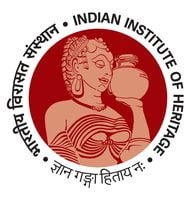The famed city of Banaras, capital of the Mahajanapada of Kashi, needs no introduction. The wealthy merchants of Kashi have found a fabled place in the Buddhist Jataka tales, while the Puranas associate the city to the abode of the immortal love of Shiva and Parvati, and explicate the foundation of the city to have been laid by Shiva, himself. The famous Manikarnika ghata of Banaras, which translates to mean a gem encrusted ear ornament, is named after the ear ornament that fell in a kunda, and was worn by Shiva, or according to some versions of the tale, by Parvati.
In the Mughal era, India’s contact with Persia increased. This period witnessed a new wave of influences and inspirations that seeped in from the Persianate and Midle-Eastern world and brought about an overarching amendment to Indian aesthetics. New techniques of enamelling got introduced to Indian jewellers.
A style of painted enamelling, known as gulabi meena which was practiced in Persia and had evolved further in Isfahan reached its zenith under the patronage of Qajar dynasty, was introduced by immigrant Persian meenakars to the Mughal empire, and travelling traders to the jewellers of Banaras. The technique differs from the enamelling methods that flourished under Mughals in the rest of the country, both in execution as well as aesthetics. It metamorphosed at the hands of the indigenous enamellers during the next two centuries acquiring a style unique to the region, so much so that Banaras received a Geographical Indication (GI) tag for gulabi meena. While the champleve technique of enamelling was more popular in the rest of India, Banarasi meenakars used a composite technique of champleve and painted enamelling, which was unique to them. Using five subsequent applications of powdered enamel and firing, the Banarasi meenakar decorates his pieces with translucent pink flowers of roses and lotuses over an opaque white enamelled ground. In some pieces, the colour blue is used instead of pink, creating the same effect over white. The sublime execution of petals of these flowers imbue the jewellery pieces with an ethereal quality, as if reminiscing the romance of a bygone era.











